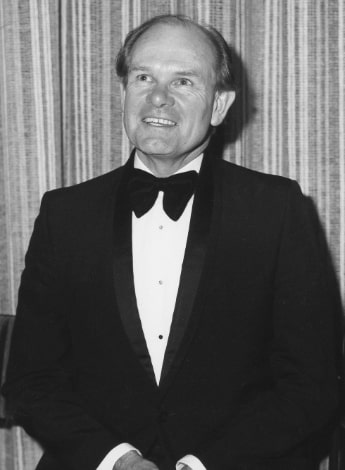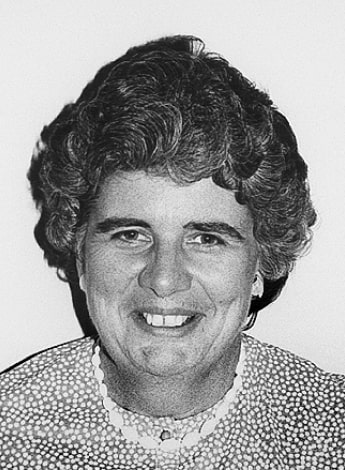
Australian College of Physiotherapists: a concise history

August 2021 marks the 50th anniversary of the Australian College of Physiotherapists. The position of the College today reflects our forebears’ vision for clinical and academic excellence in the physiotherapy profession. It also reflects the work of many physiotherapists over 50 years.
While there has been significant change and development of the College over this time, the values of the College Founders, of excellence in clinical practice and knowledge creation, remain. It is important to know our past to understand the present and to be able to guide the future of the College.
In this, the first of three brief narratives on the history of the College, Emeritus Associate Professor Gwendolen Jull AO FACP and Associate Professor Patricia Trott AM FACP cover the creation of the College and the first Fellowships by Original Contribution.
The second narrative will outline the history of Fellowship by Specialisation and College development until 2010, and the third will present College development from 2010 until this current time.
The preparatory period
The concept of a College of Physiotherapists in Australia was several years in development.
Take yourself back to the 1940s and 50s. Across Australia, there were no formal postgraduate opportunities for higher level clinical training or qualifications in research—hard to imagine in 2021.
Yet physiotherapists were, in those times as today, striving for excellence and the further development of the profession for best patient care.
The visionaries of the time saw the need to develop a means of recognising and encouraging scholarly and original work carried out by members of the profession.

Gwendolen Jull, who served as College president from 1998 to 2009, opens proceedings at the 2007 College graduation ceremony.
In 1955, the beginnings of the College were cemented.
After lobbying, particularly by the South Australian and Victorian branches, the Australian Physiotherapy Association requested that the chairs of the postgraduate subcommittee of each state branch consider the matter of a fellowship on a federal basis and take the necessary steps to bring it to fruition (Federal Council News 1955).
At the 1956 APA Biennial Conference, the Federal Council discussed a model for awarding fellowships.
In the United Kingdom, fellowships were awarded by the Chartered Society of Physiotherapy (CSP).
The then editor of the Australian Journal of Physiotherapy, Dr Boyd Graham, was formally invited to contribute to the discussion (Graham 1957).

Geoffrey Maitland, the inaugural president of the College.
Graham suggested that the APA should not follow the CSP model as the awarder of fellowships but rather move to the formation of an independent college.
The recommendation that the college be set up as an autonomous body outside the APA, but preserving close links with it, proposed a relationship which would be like that between the Royal Australasian College of Physicians and the Australian Medical Association.
Graham suggested that, as an initial step in preparation for the formation of the college, special societies be created for the advancement of the profession and the encouragement of scientific research.
Fellowships would be awarded for works of outstanding merit.
The APA Federal Council, on this advice, did not adopt the British system and established separate societies in each state.
These societies comprised senior physiotherapists in academia and the public and private sectors and were independent of the APA. The concept of a college of physiotherapists was supported unanimously by all states.
Societies formed in three states: South Australia (1957), Victoria (1962) and New South Wales (1963).

Patricia Trott, one of the first three Specialist Fellows, delivers the Founder’s Address during the College graduation ceremony in 2009.
Members were charged to work both towards the further development of the knowledge base and towards the establishment of an independent college of physiotherapists.
Members met regularly over a period of several years and presented scientific papers to the group for general discussion.
This process raised the standard of members’ knowledge and professional practice as well as that of the wider profession.
Most papers were published in the Australian Journal of Physiotherapy over the next decade.
The societies kept in close contact with each other and the Federal Council of the APA in their early, formative years, working gradually over a period of 15 years, towards the goal of establishing a college.
In May 1967, a meeting of representatives from the three state societies was held in Melbourne at the time of the 10th APA Biennial Congress.

Roberta Shepherd.
Invited observers from Queensland, Western Australia and Tasmania were also present. This was a watershed meeting where definitive actions were taken for the formation of a college of physiotherapists by the next biennial congress in Adelaide in 1969.
The South Australian society took up the initiative and their suggestions were put to the New South Wales and Victorian societies.
Much discussion ensued and the APA was kept informed of progress and extracts of discussion were published in the Australian Journal of Physiotherapy to keep the whole membership informed.
In August 1969, the societies invited representatives from all states to a meeting in Adelaide, held at the time of the 11th APA Biennial Congress.
Recommendations from the South Australian society were presented and accepted unanimously—the decision was made to form the Australian College of Physiotherapists.
A steering committee comprising two members of each society was established, with Geoffrey Maitland as chair. This committee was charged with drafting, with legal support, the Constitution of the College.
The first Constitution of the Australian College of Physiotherapists was successfully drafted.

Marie Hammond.
Founders were elected to put the Constitution into effect. Founders were not members of the College and it was planned that as Fellowships were granted, Founders would step down and eventually the Fellows would take over the management of the College.
The College Council was to comprise a president, honorary secretary, treasurer and two elected councillors.
Initial suggestions for the purposes of the College were to grant Fellowship awards, provide education for membership, award scholarships and stimulate research.
The decision was made that the first Fellowships of the College would be awarded for scholarly work in the form of a thesis, monograph or published work (later named Fellowship by Original Contribution).
Note that at this time, opportunities to undertake a PhD in physiotherapy were not available to the vast majority of physiotherapists.
The award would be named a Fellowship of the Australian College of Physiotherapists (FACP) and only members of the APA would be eligible to apply for these Fellowships.
Regarding initial suggestions for purposes of the College, it was recognised as impractical for the College to conduct postgraduate courses.
The formation of the Australian College of Physiotherapists
The Australian College of Physiotherapists was established in August 1971 at a special inaugural meeting held during the 12th Biennial Congress of the APA in Perth. This was a milestone in the history of physiotherapy in Australia.
The South Australian Society commissioned and donated a logo (pictured above) to the College to mark its establishment in 1971.
The logo was etched onto a brass medallion, which was to be worn by the College president on official occasions, such as at graduation ceremonies.
Eight eminent physiotherapists were elected as Founders of the College in 1971: Geoffrey Maitland (SA)—President Pat Cosh (VIC)—Honorary Secretary Monica Adams (ACT), Marie Hammond (SA), Ann Hodges-Hall (Editor, Australian Journal of Physiotherapy), Beryl Kennedy (NSW) Margaret Ward (TAS) Cliff White (WA)
The Founders were charged with guiding the initial planning and organisation of the College in accordance with the Constitution.
A board of censors, composed of the Chief Censor and two other censors, was formed to deal with all matters concerning the requirements, submission and appraisal of theses and monographs.
The first two Fellowships by Original Contribution were awarded in February 1977 in a ceremony at the 15th APA Biennial Congress in Hobart. The first Fellows of the Australian College of Physiotherapists (by Original Contribution) were Roberta Shepherd and Barry Stillman.
By 1985 all the Founders had been replaced by Fellows.

Pat Cosh and Marie Hammond were made Honoured Founders in recognition of their many years of dedicated and outstanding service.
At the time of the formation of the College, rapid changes were occurring in physiotherapy education and the time was not far off when educational bodies would offer postgraduate diplomas, master’s and doctoral degrees.
It was foreseen that the latter might supersede the Fellowship by Original Contribution.
It was planned that the College would fulfil a more conventional role akin to medical colleges by granting a national award that would recognise and reward high standards of scholarship and practice related to clinical physiotherapy that had not necessarily been attained through formal postgraduate programs.
This national award in clinical specialisation (Fellowship by Specialisation) would take its place in an educational structure that would comprise undergraduate and postgraduate education in universities and, at the time, colleges of advanced education as well as continuing professional education courses (Shepherd 1983).
The history of specialisation will be the topic of the second narrative and will appear in next month’s InMotion.
© Copyright 2024 by Australian Physiotherapy Association. All rights reserved.





